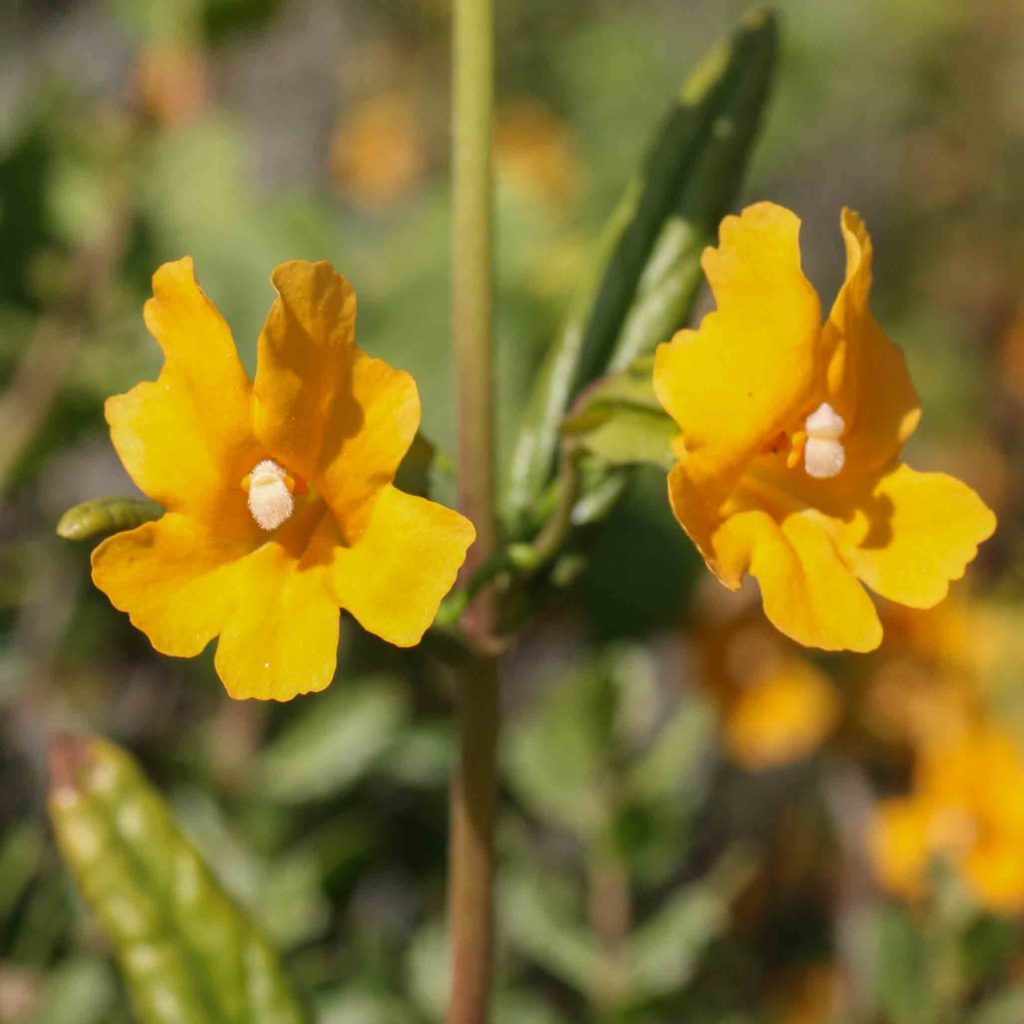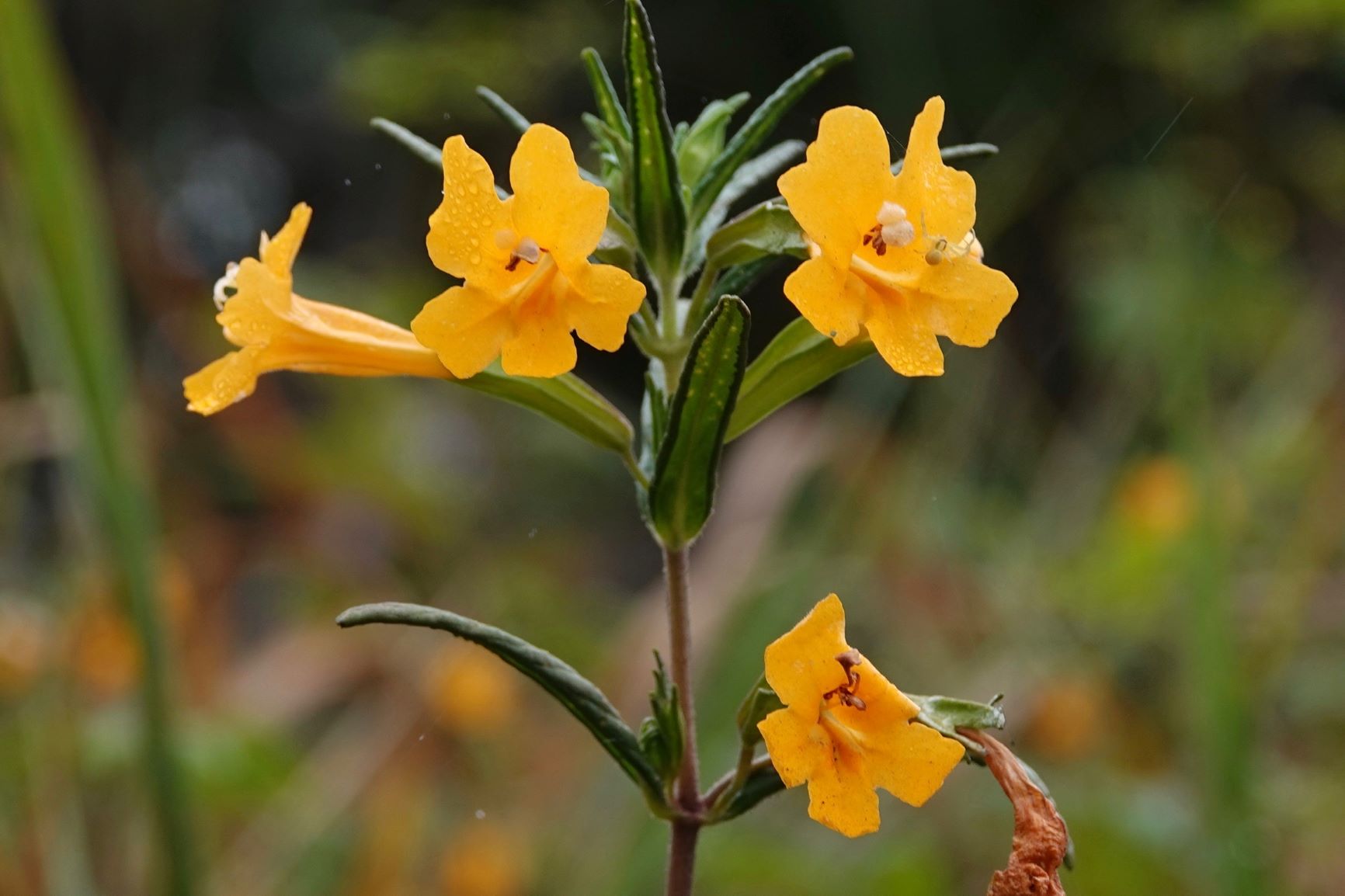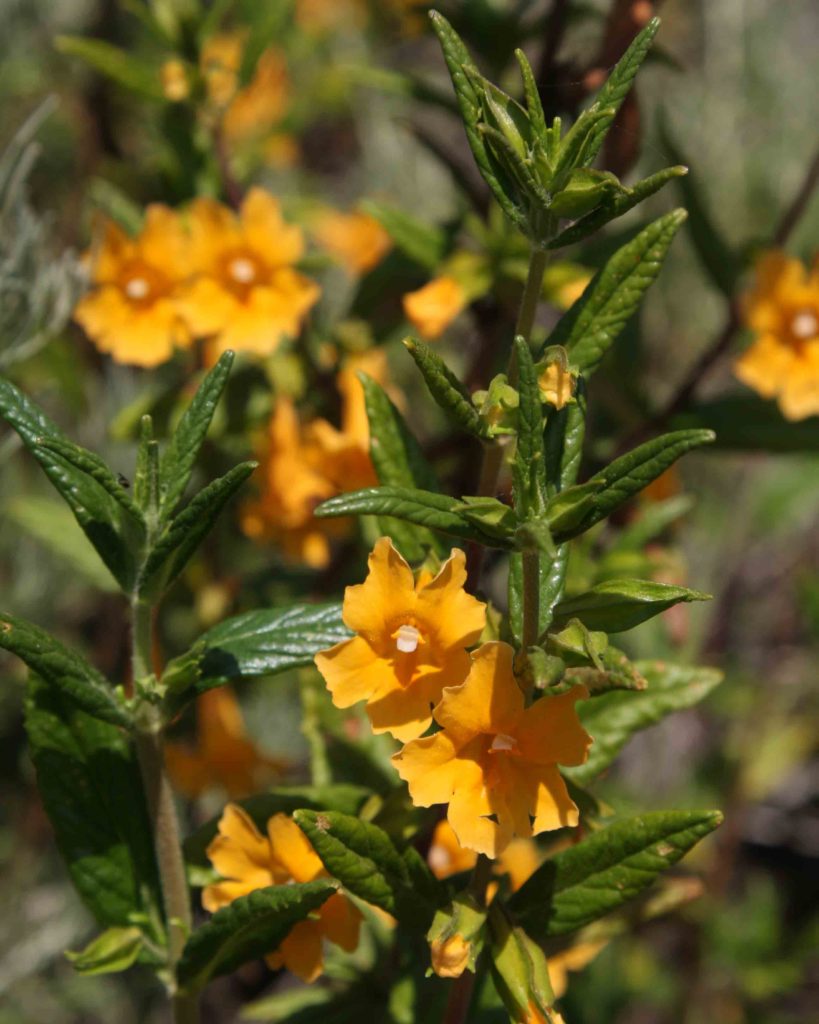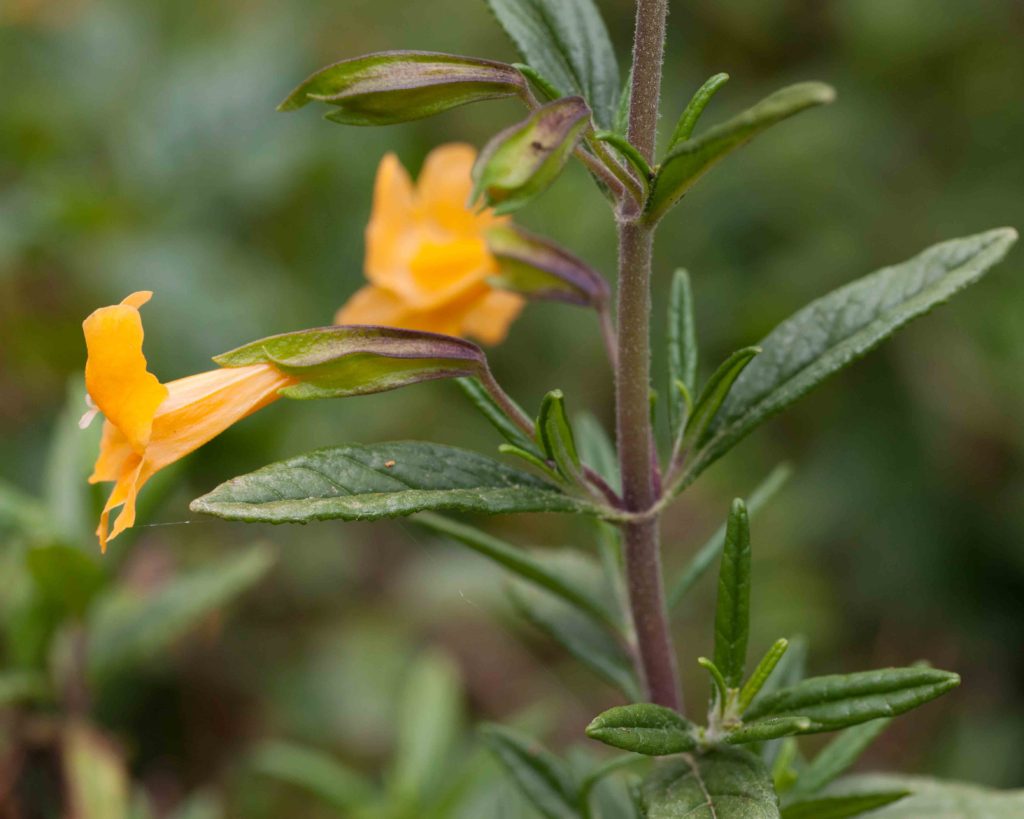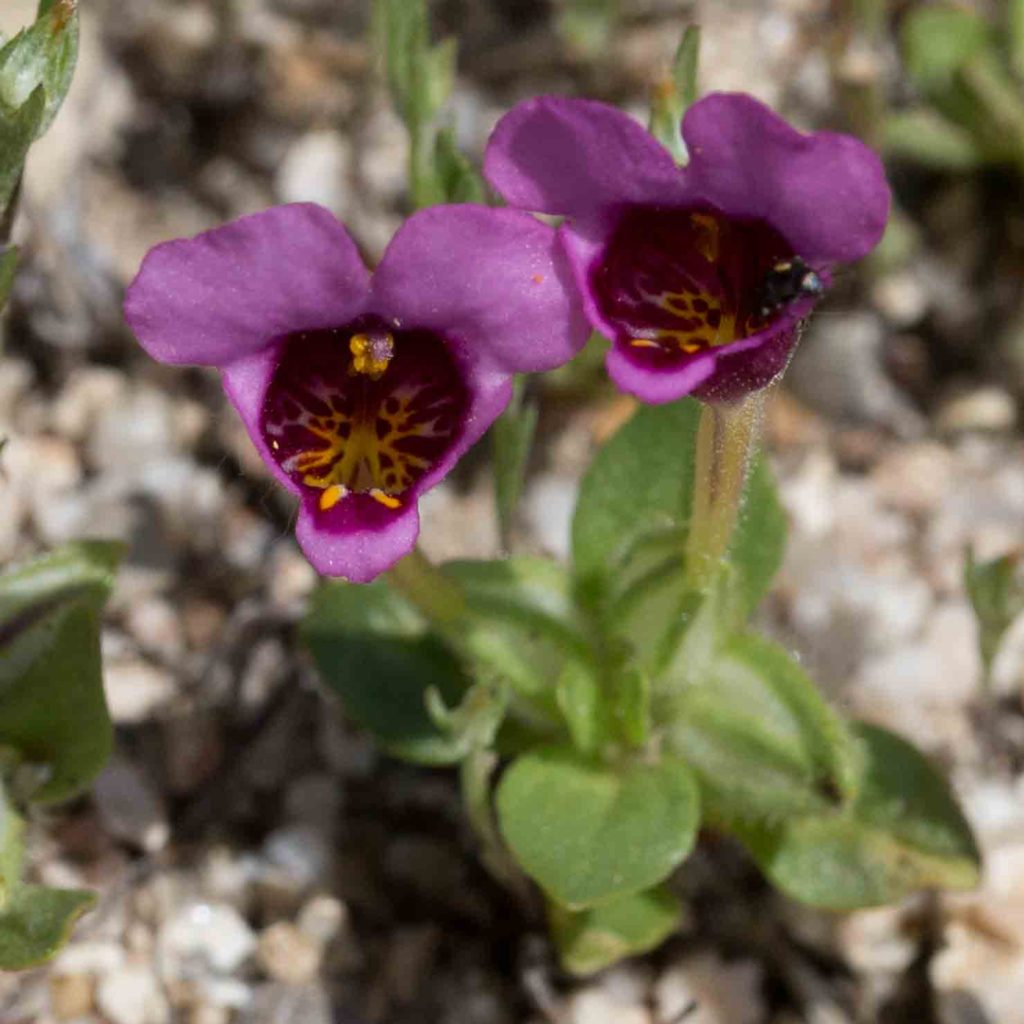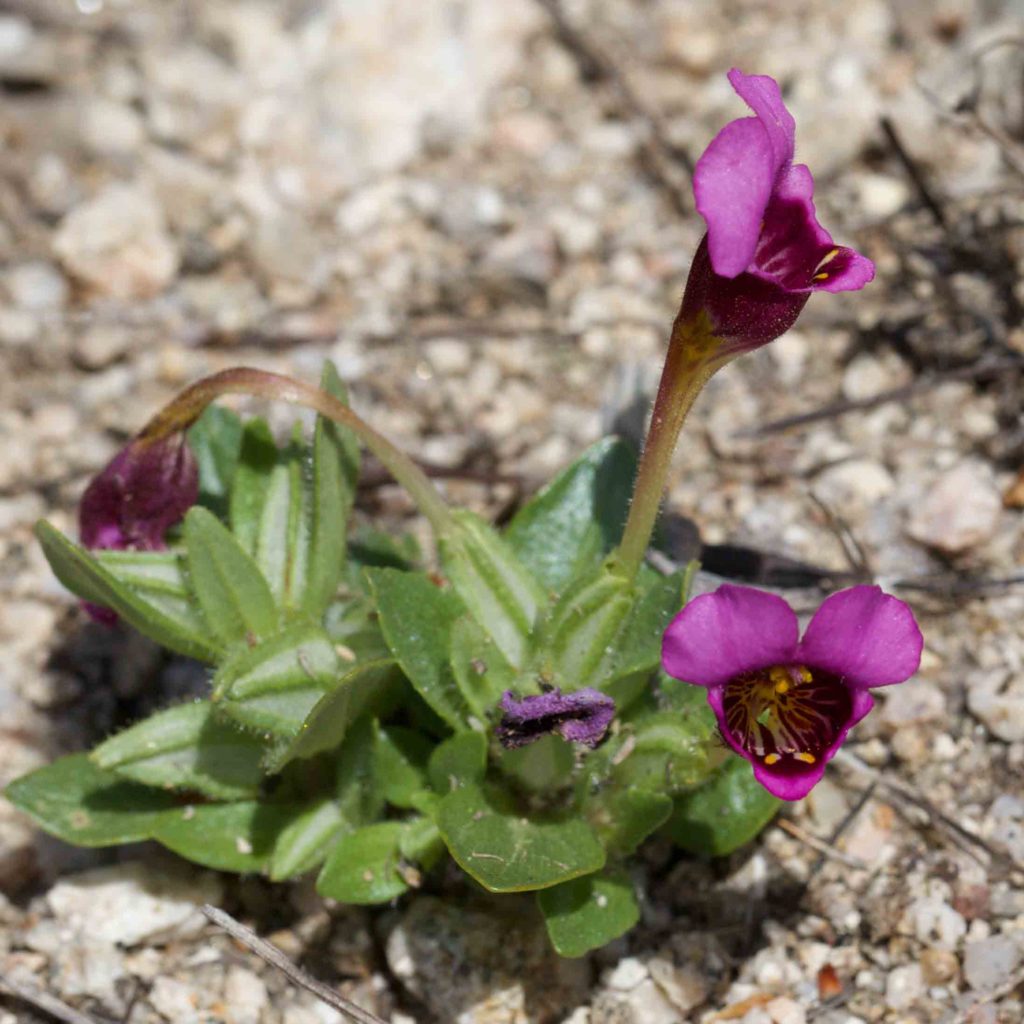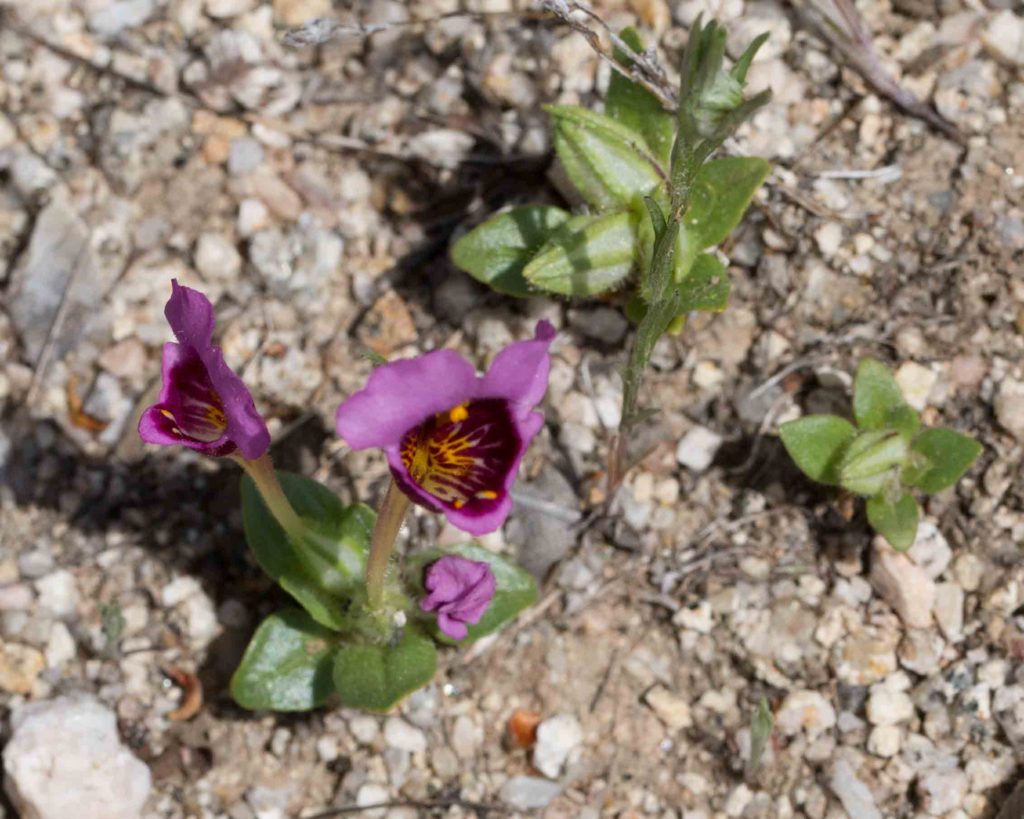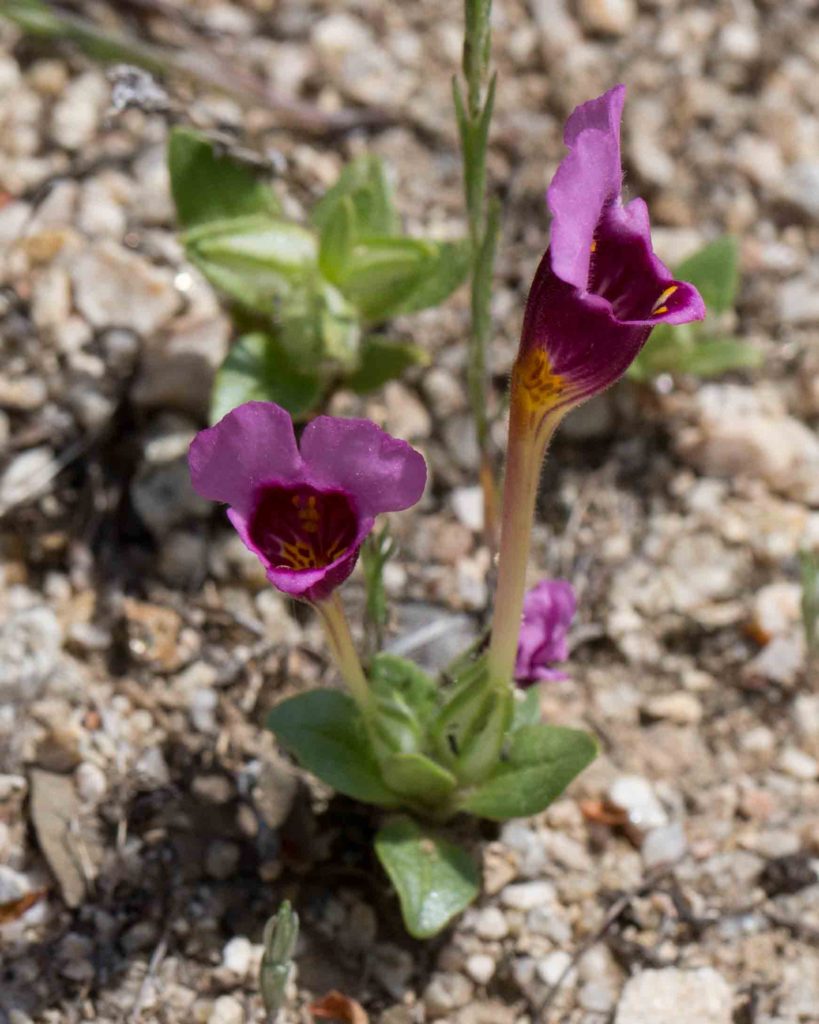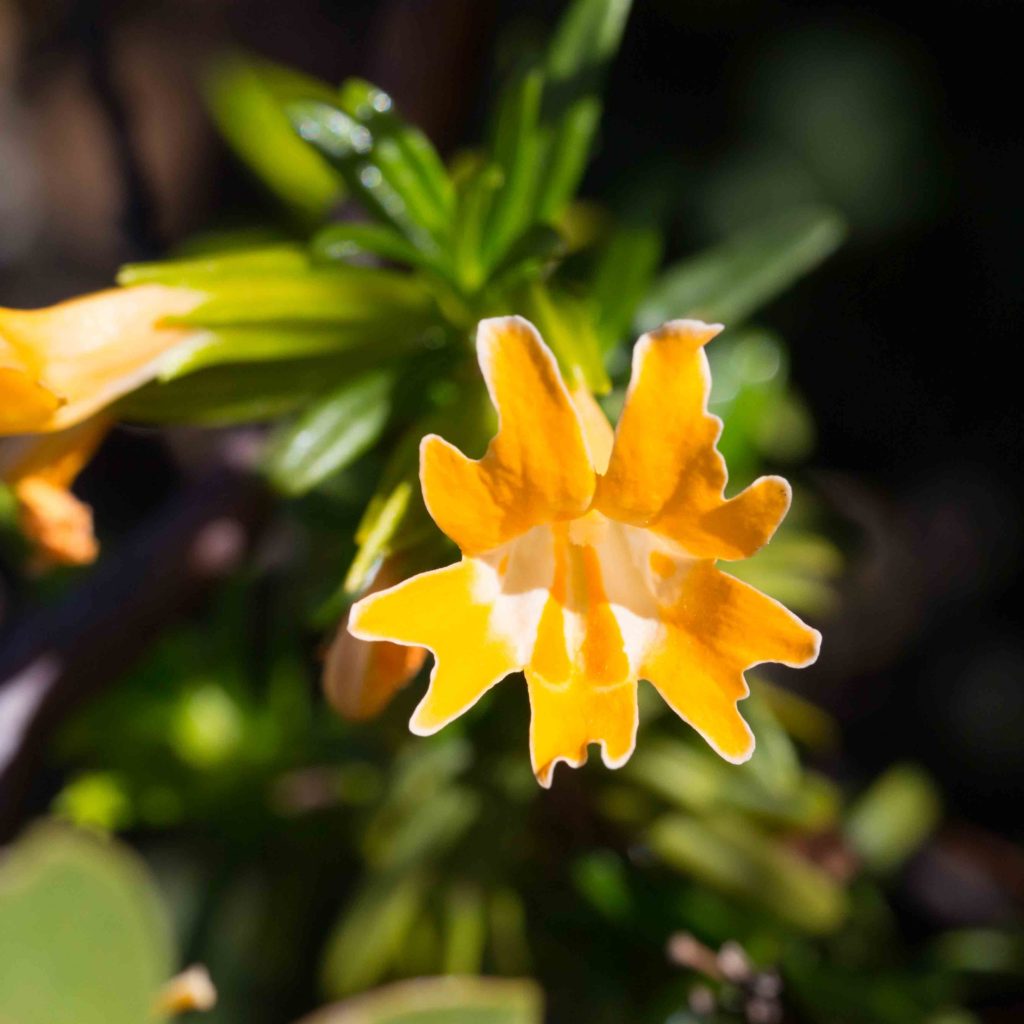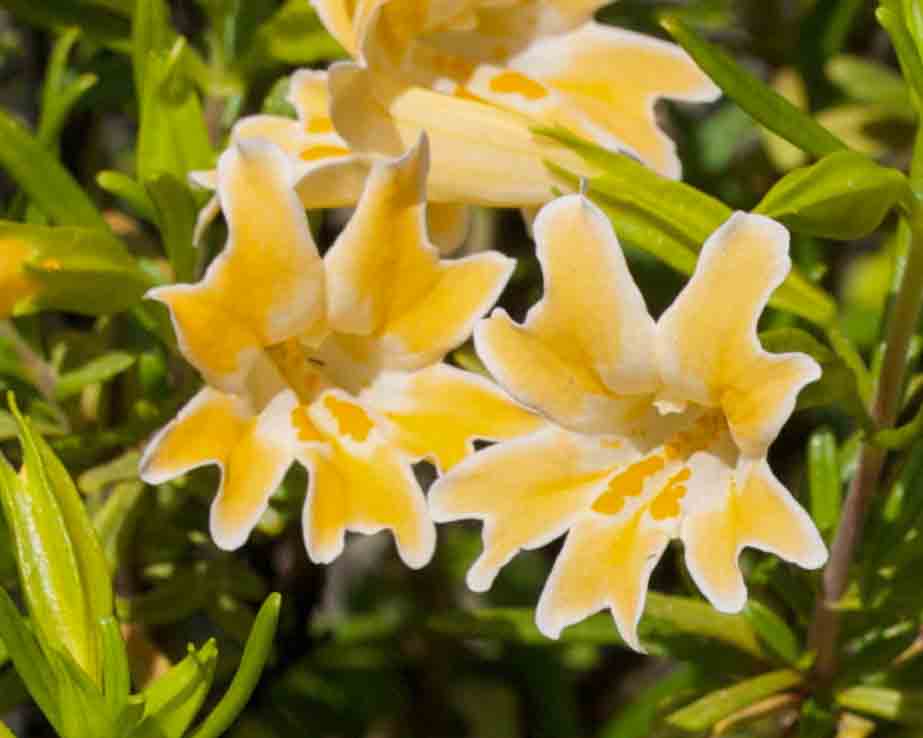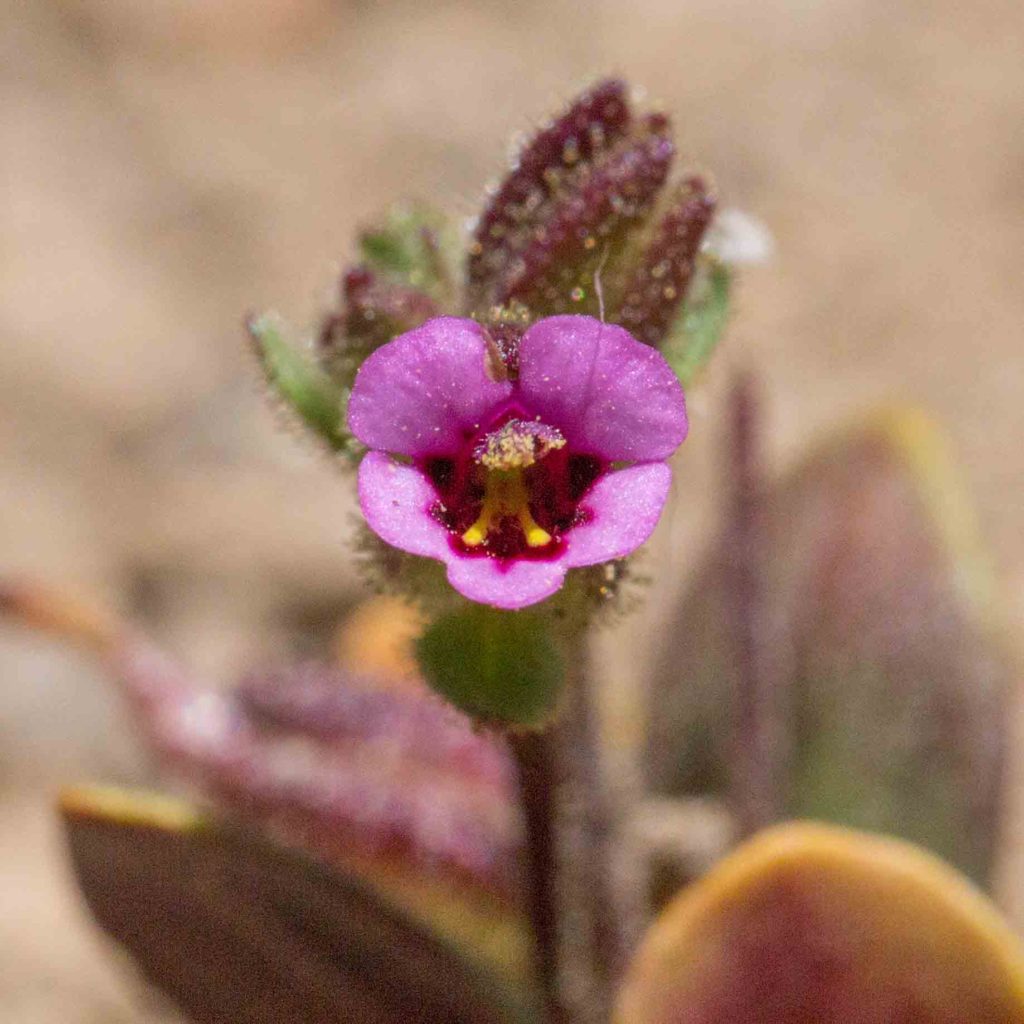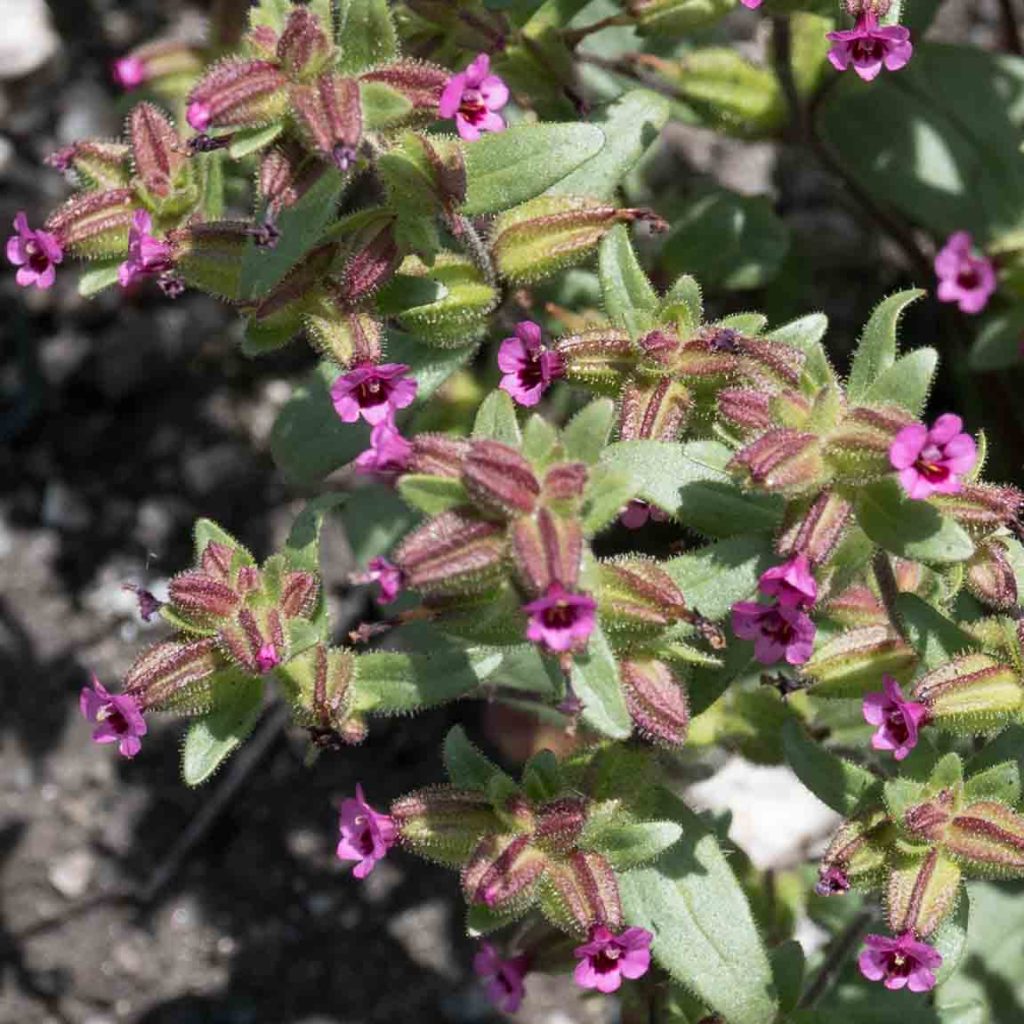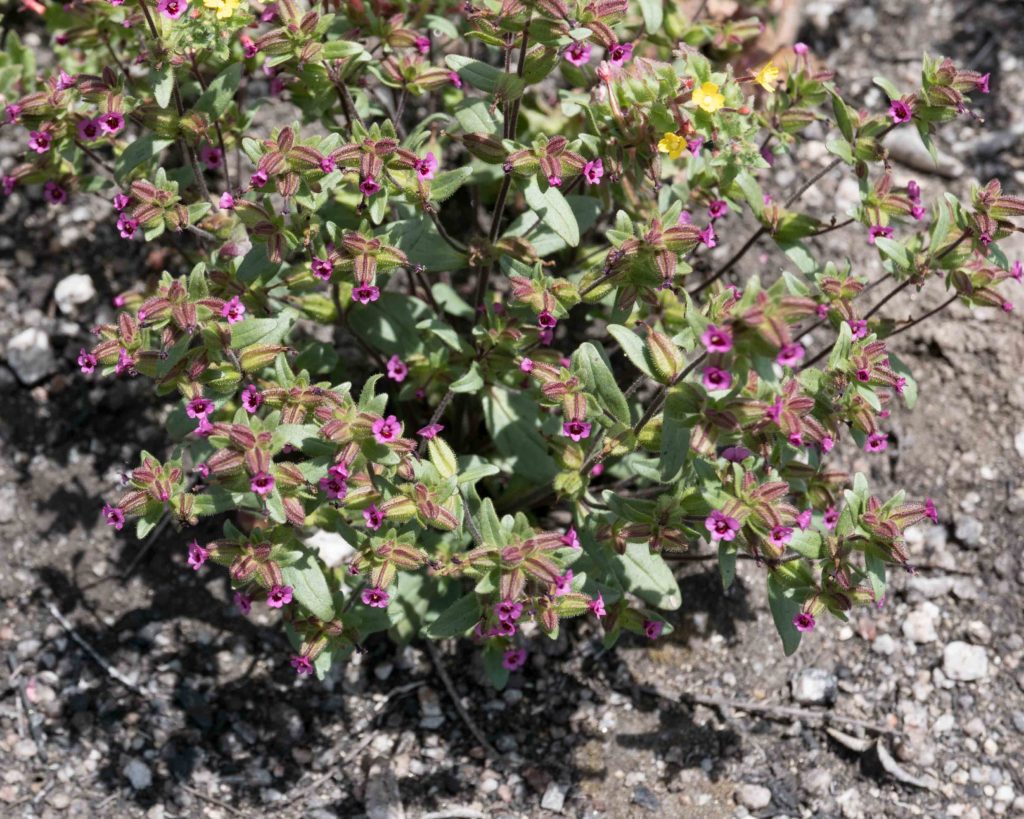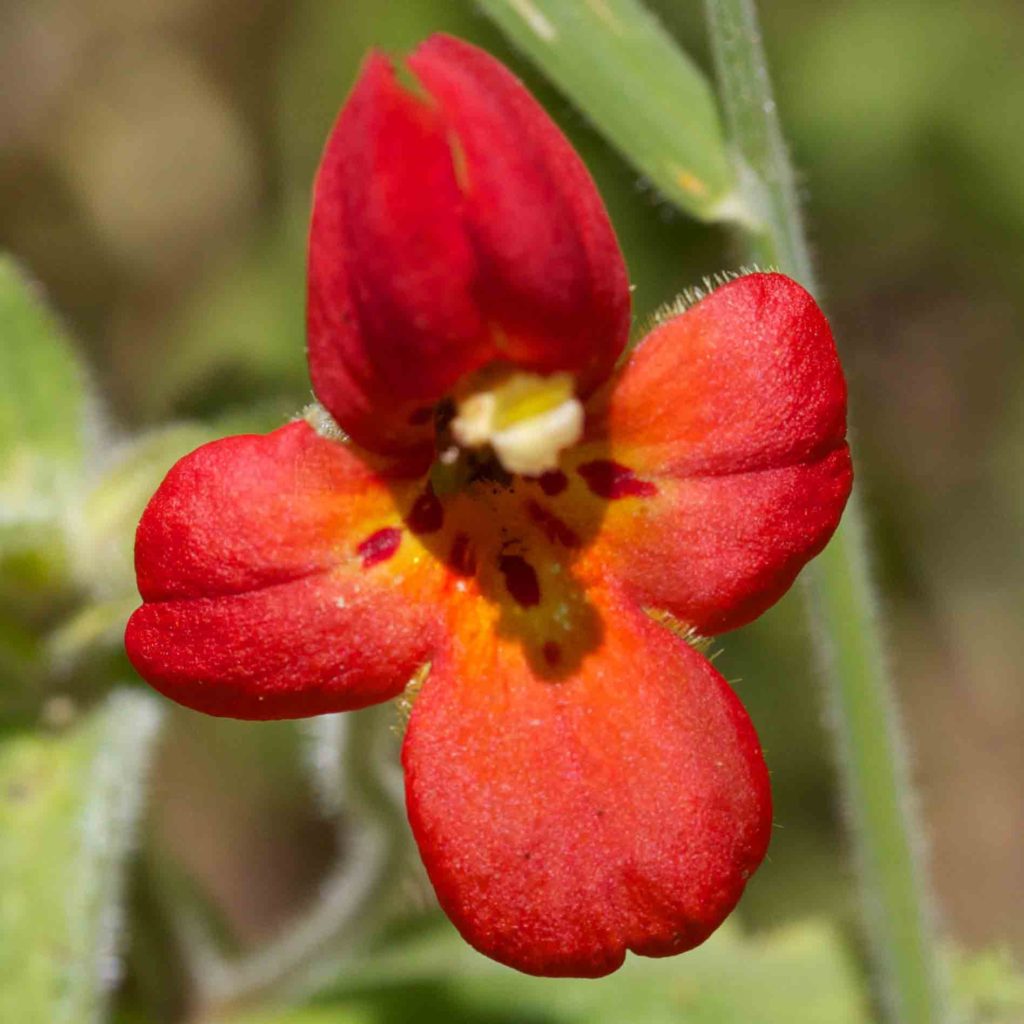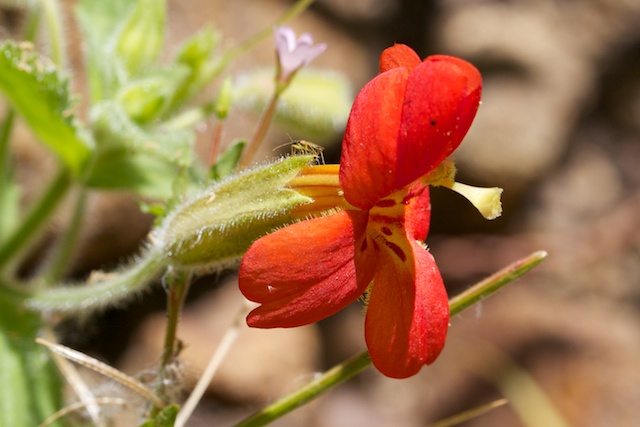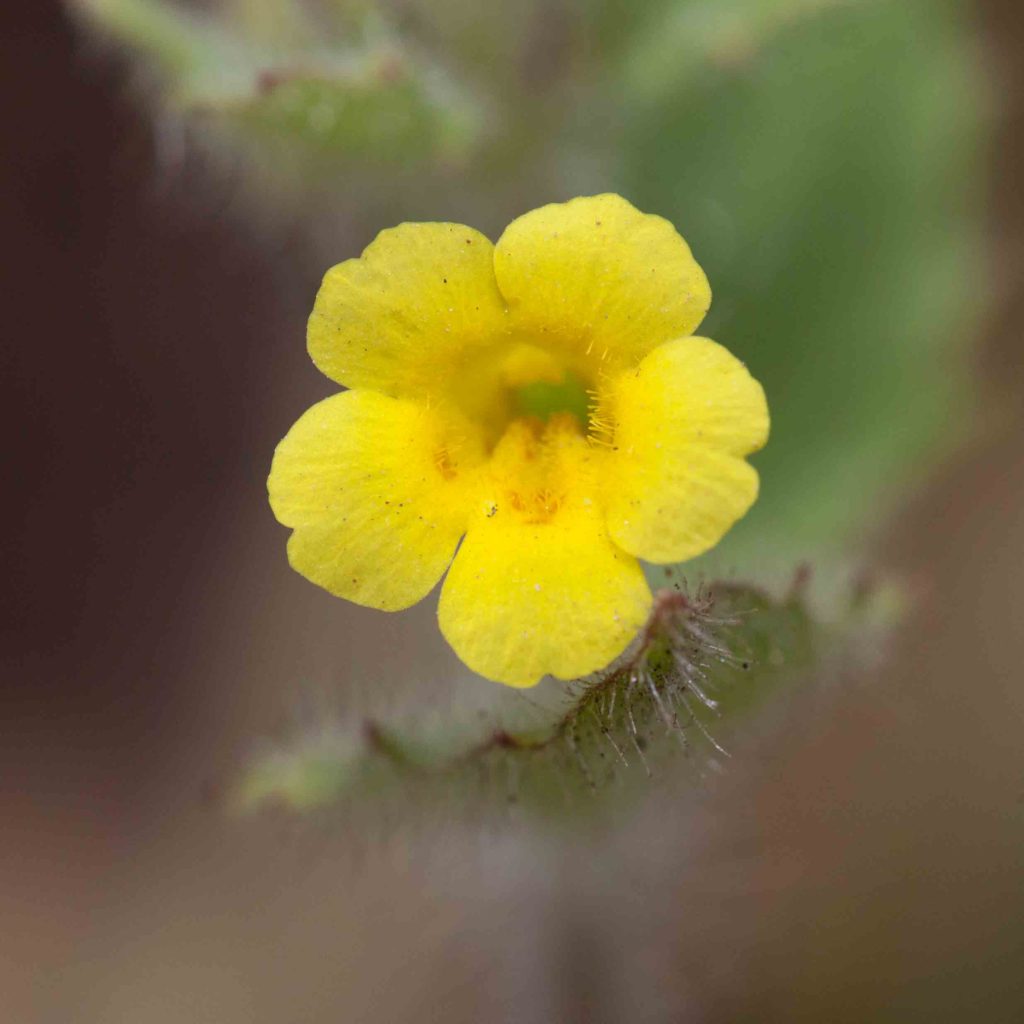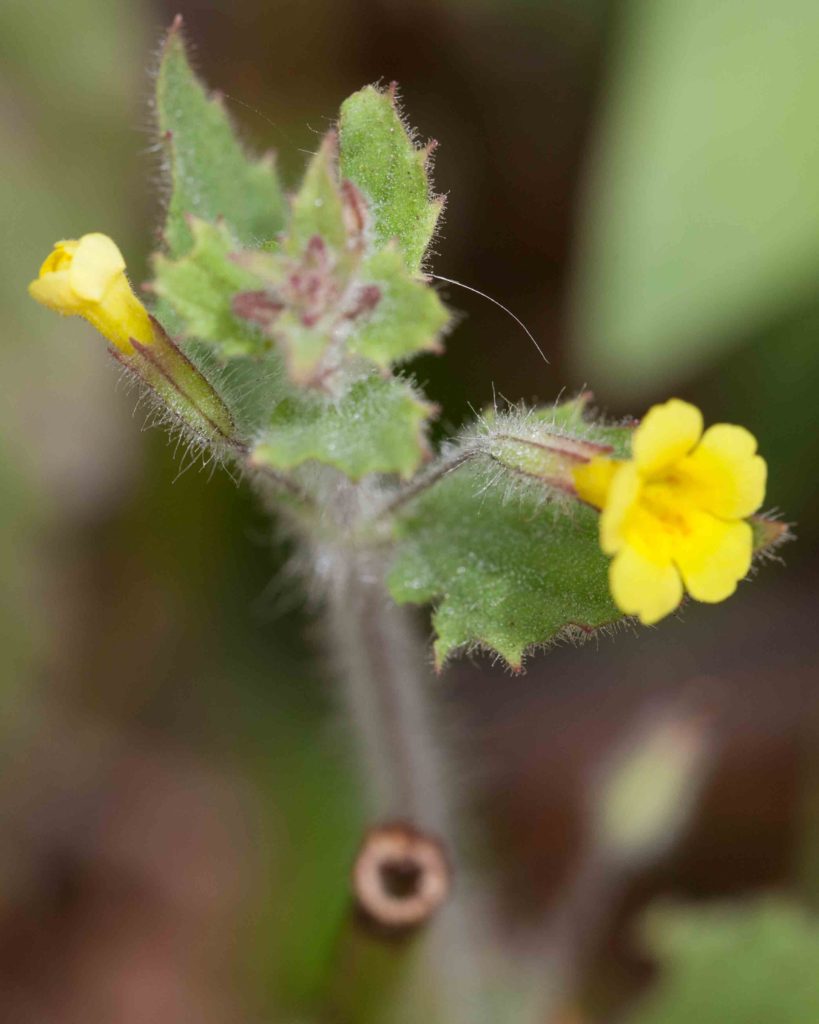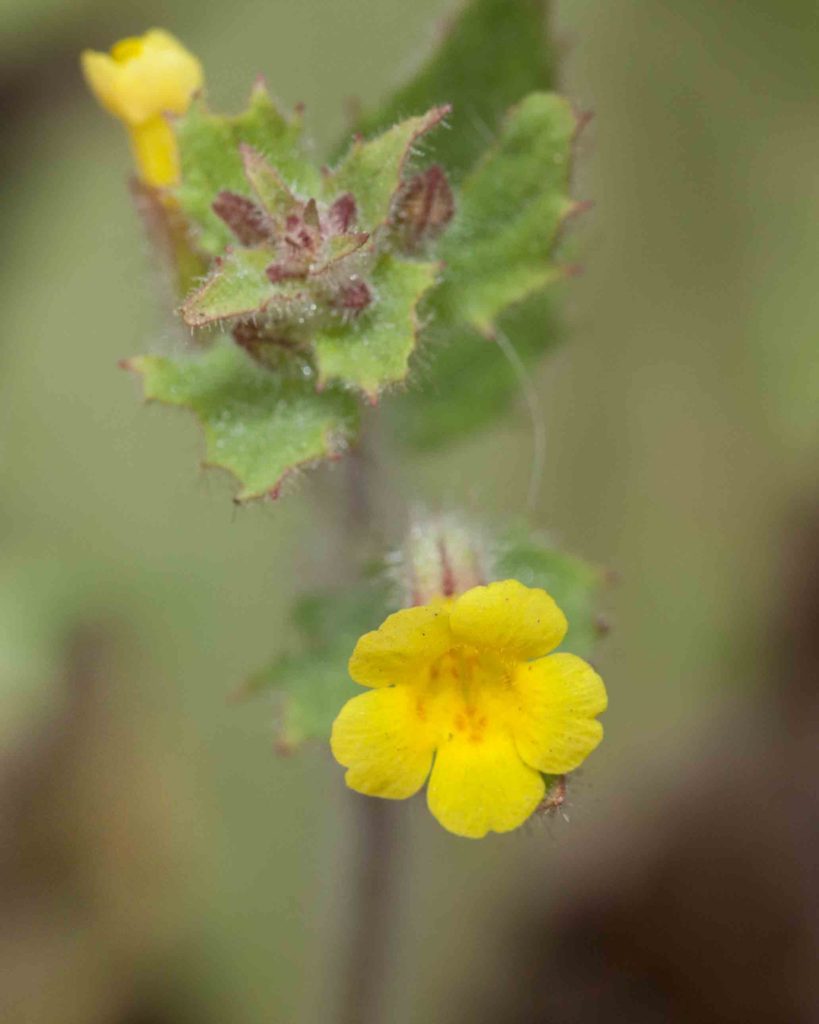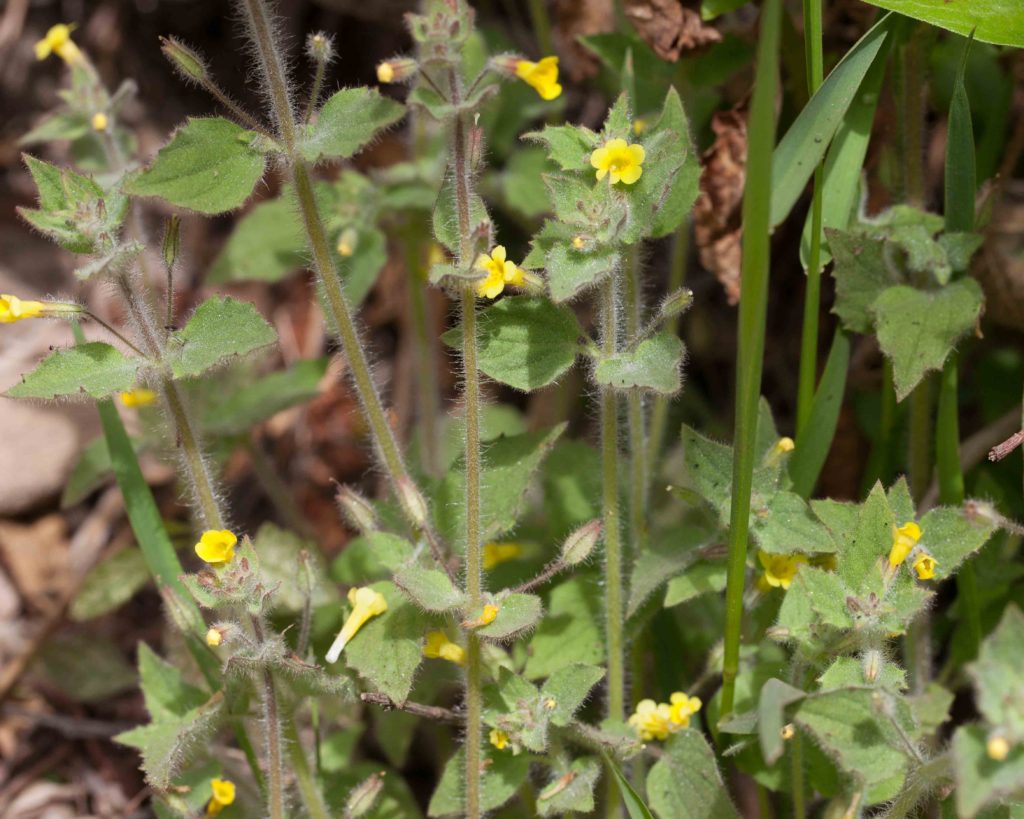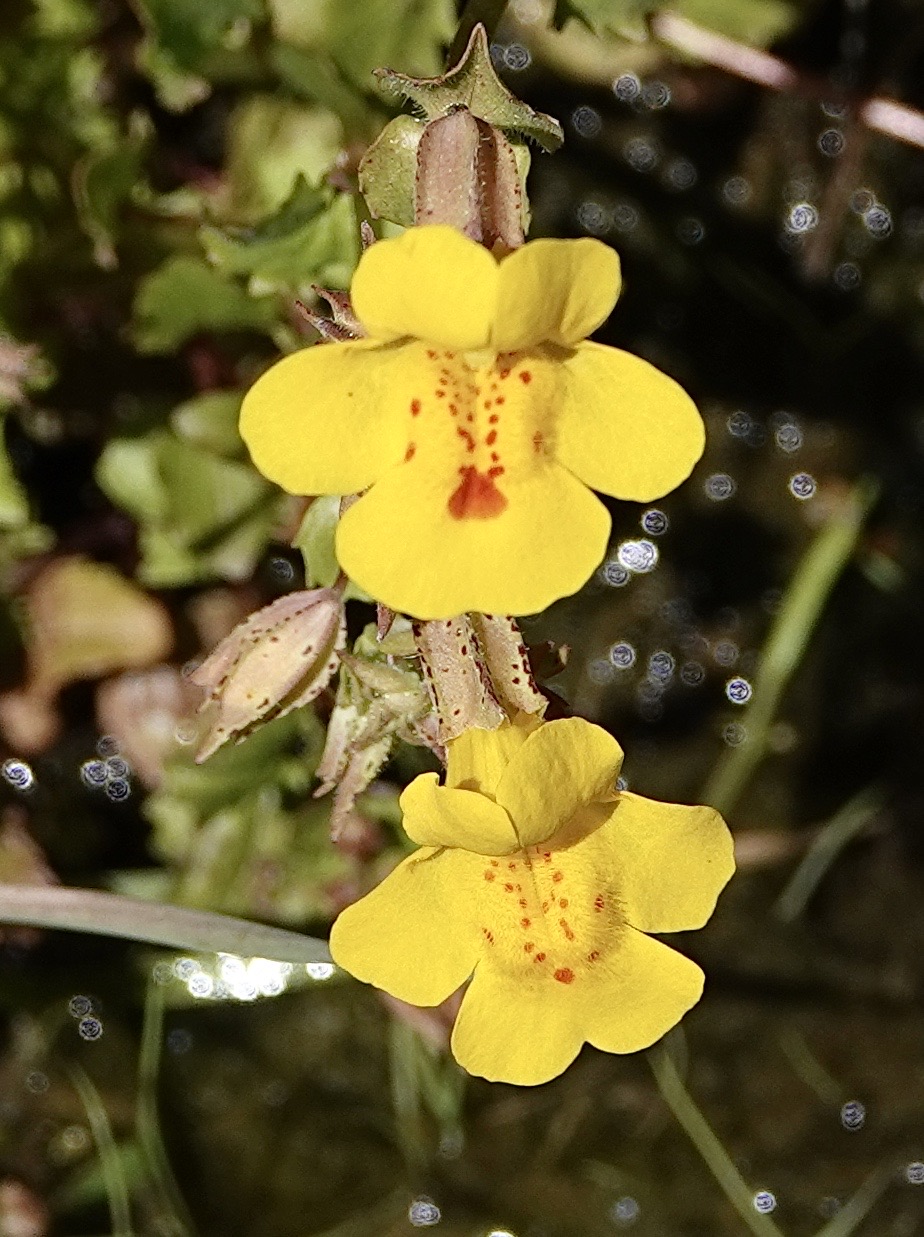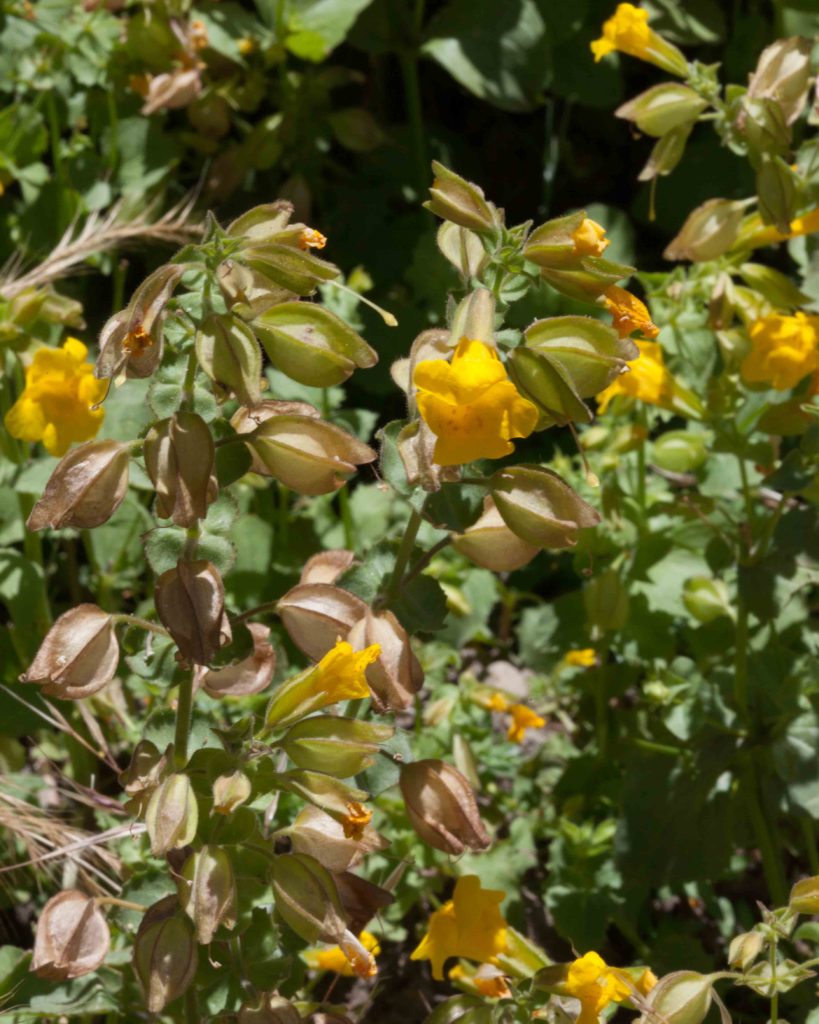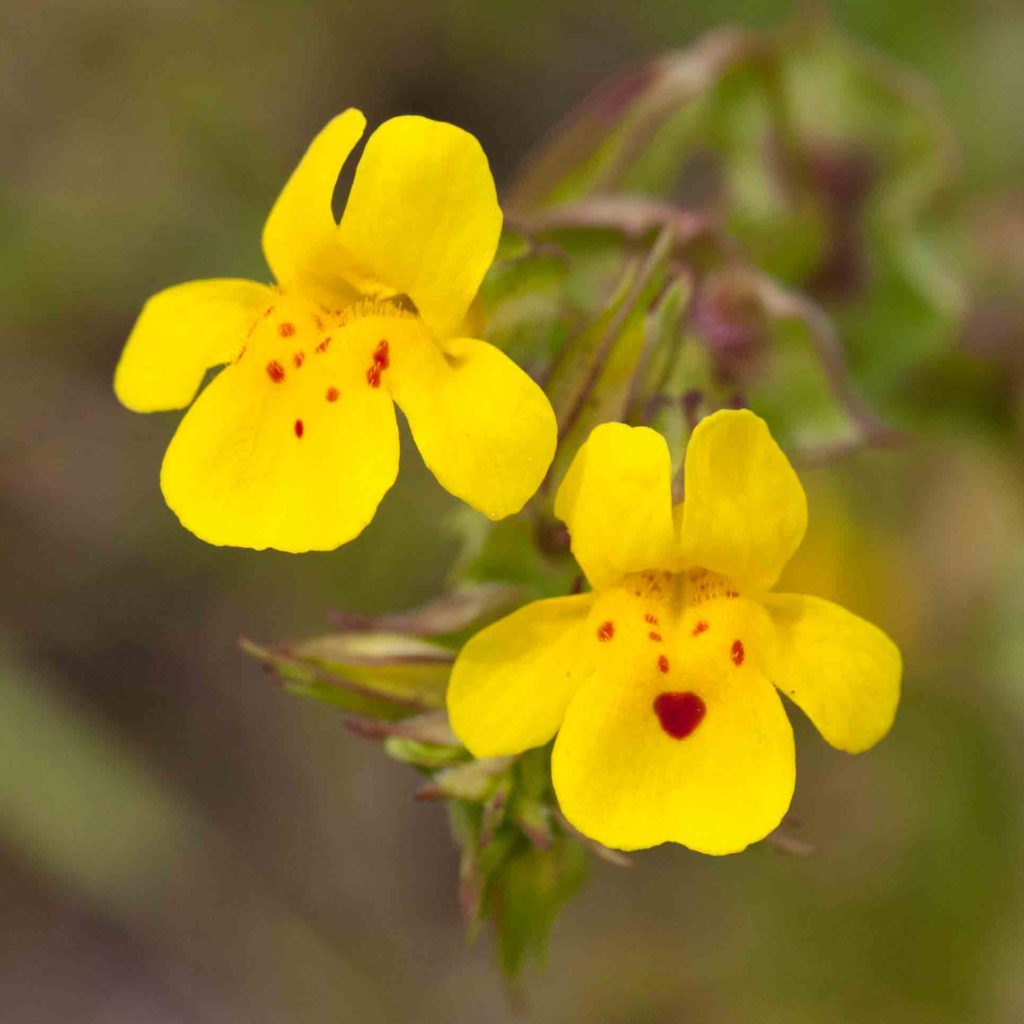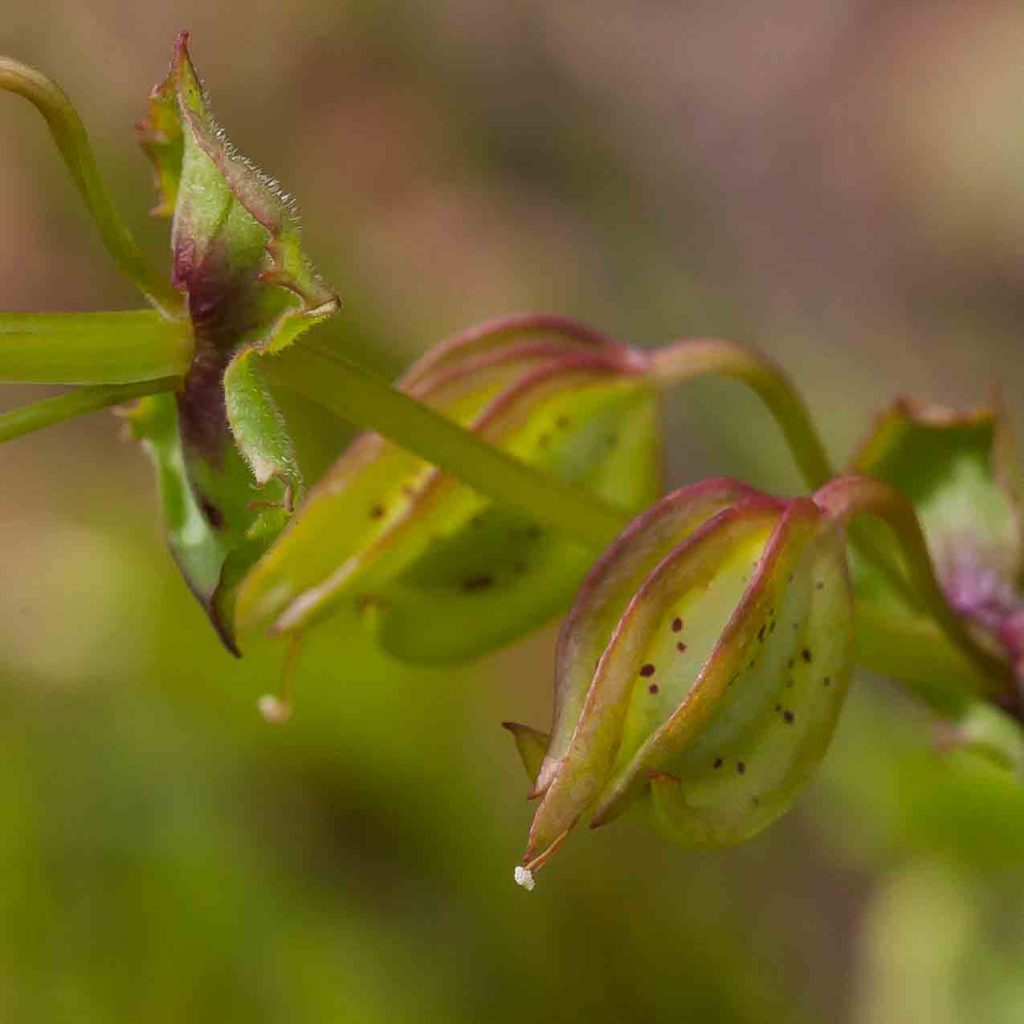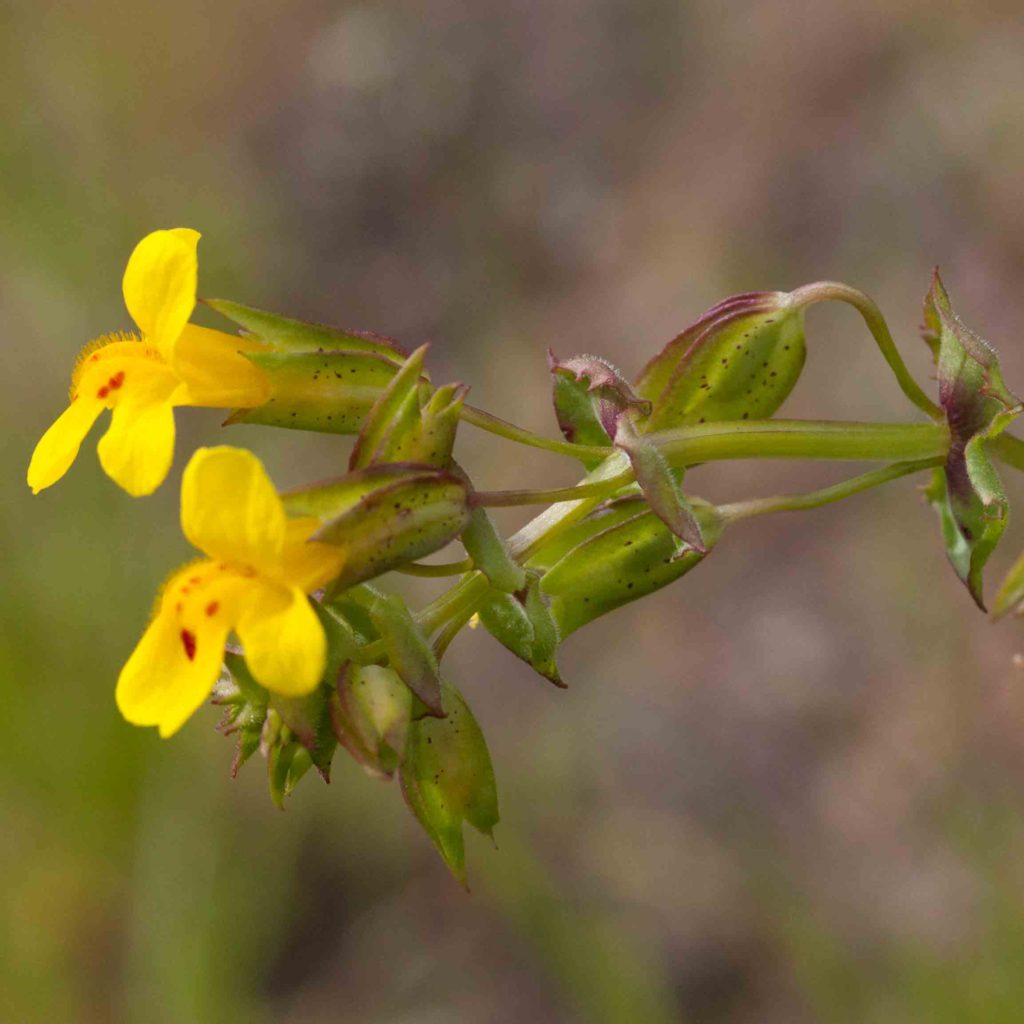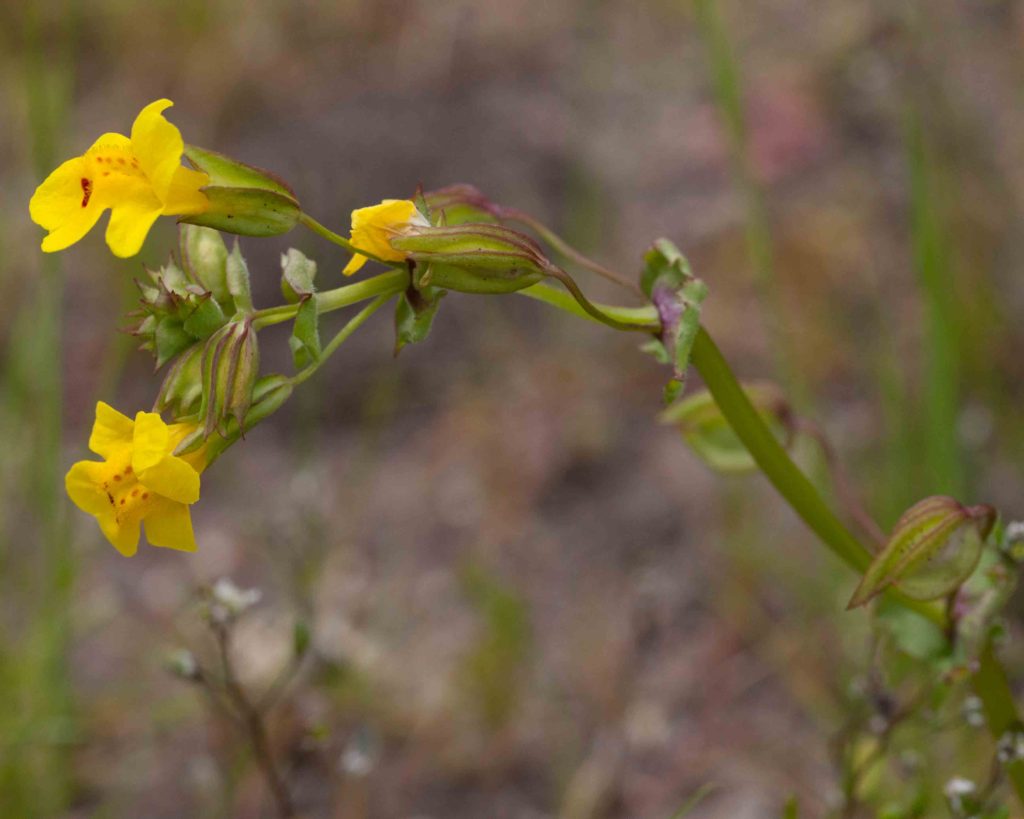Phrymaceae: Lopseed Family — Monkeyflowers
Monkeyflowers used to be treated as Mimulus, but recent scientific literature has divided them between two genera, Diplacus and Erythranthe. Diplacus (which include the shrubby monkeyflowers) are characterized by flowers which are either sessile, or have pedicels shorter than the calyx, and which are persistent (remain attached) after flowering. Erythranthe have flowers with a pedicel longer than the calyx, and which are deciduous (fall) after flowering. Both Diplacus and Erythranthe include plants with comparatively large yellow or orange flowers, and plants with comparatively small magenta to purple flowers.
Sticky Monkeyflower – Diplacus aurantiacus
Blooms:
Mar–Aug
Plant Height:
10–150 cm
Flower Size:
Medium
Origin:
Native
Habitat:
Coastal and dry hillsides inland
Notes:
This is an extremely common shrub, especially in the Outer Coast Ranges. It is immediately recognizable, with its bright orange flowers, generally arranged in pairs. Leaves are dark green, opposite, and elliptic to linear. Stems, leaves and calyxes are sticky to the touch. Flowers are either sessile or short-pediceled. Photo #2 by CJH.
Chinless Mouse-ears – Diplacus douglasii
Blooms:
Feb–Apr
Plant Height:
< 4 cm
Flower Size:
Very small
Origin:
Native
Habitat:
Moist, gravelly places
Notes:
This little monkeyflower has magenta to purple flowers, with gold-streaked throats. The common name seems to fit the shape! The lower corolla lobe is vestigial, in striking contrast to the eponymous upper lobes. Note the long flower tube and the short pedicel.
Santa Lucia Sticky Monkeyflower – Diplacus linearis
Blooms:
Apr–July
Plant Height:
10–150 cm
Flower Size:
Medium
Origin:
Native
Habitat:
Rocky slopes (Santa Lucia Mountains)
Notes:
Common in the Santa Lucia Mountains, generally at higher elevations. It is similar to Sticky Monkeyflower (Diplacus aurantiacus, see above), but can be distinguished by the prominently notched lobes of its flowers. The flowers are a little larger than those of Sticky Monkeyflower, and tend to be paler, varying in color from orange to salmon or pale yellow. The leaves are linear-lanceolate. Photo #3 by CJH.
Rattan’s Monkeyflower – Diplacus rattanii
Blooms:
Apr–July
Plant Height:
1–18 cm
Flower Size:
Small
Origin:
Native
Habitat:
Dry habitats, often after burns
Notes:
This has particularly small flowers, with a red-purple or rose corolla, 4–7 mm wide, and yellow folds at its mouth. The upper and lower corolla lobes are similar in size. The colors are similar to Chinless Mouse-ears (Diplacus douglasii, see above), but the small lobes and the short (7–10 mm) flower tube distinguish this species. The calyx is ribbed, swollen and hairy, almost as long as the flower tube, more or less enclosing it. Plants encountered in recently burned areas seem to be fuller and larger than those found in areas that are merely dry.
Scarlet Monkeyflower – Erythranthe cardinalis
Blooms:
Apr–July
Plant Height:
25–80 cm
Flower Size:
Large
Origin:
Native
Habitat:
Wet places, generally streambanks in coastal or mountain canyons
Notes:
The bright red flowers on long pedicels make this easy to recognize. The two upper lobes are arched, and the three lower ones sharply down-curved. The tubular calyx is long and hairy. Leaves are large, toothed, opposite and light green, clasping the stem. Photos #1 and 4 by CJH.
Floriferous Monkeyflower – Erythranthe floribunda
Blooms:
Apr–Aug
Plant Height:
3–50 cm
Flower Size:
Small
Origin:
Native
Habitat:
Moist places, coastal and inalnd
Notes:
At first sight, this could be confused with Seep Monkeyflower (Erythranthe guttata, see below). However, this has smaller, rounder flowers. Also, the tube-throat is only 6–15 mm long (compared to 2–40 mm), and has smallish lobes. Peduncles and calyx are glandular-hairy.
Seep Monkeyflower – Erythranthe guttata
Blooms:
Mar–Aug
Plant Height:
15–65 cm
Flower Size:
Medium
Origin:
Native
Habitat:
Seeps and other wet places
Notes:
This is one of the more common monkeyflowers. It has distinctive, long-pediceled, bright yellow flowers, with red dots on the lower lobes. The bladder-like fruits are also distinctive. The leaves are clasping, glossy and rounded, with a small-lobed or dissected base. Often found in large quantities. Photos #1 – 3 by CJH.
Snouted Monkeyflower – Erythranthe nasuta
Blooms:
Apr–June
Plant Height:
2–35 cm
Flower Size:
Medium
Origin:
Native
Habitat:
Wet places
Notes:
The Jepson Manual combines this species with Seep Monkeyflower (Erythranthe guttata, see above), but more recent literature distinguishes it. This plant is smaller, as are the flowers, the tube-throat being only 8–12 mm long. The flowers have a red blotch at the base of the lower lip, rather than just red speckles. The fruit is distinctive: its upper calyx lobe protrudes prominently beyond the lower lobes in snout-like fashion — hence the scientific and common name.
